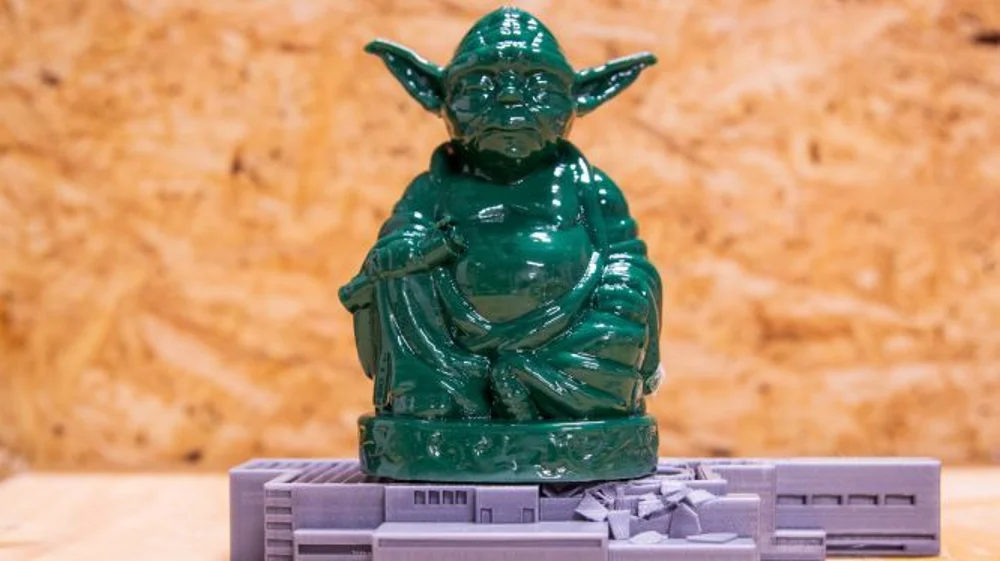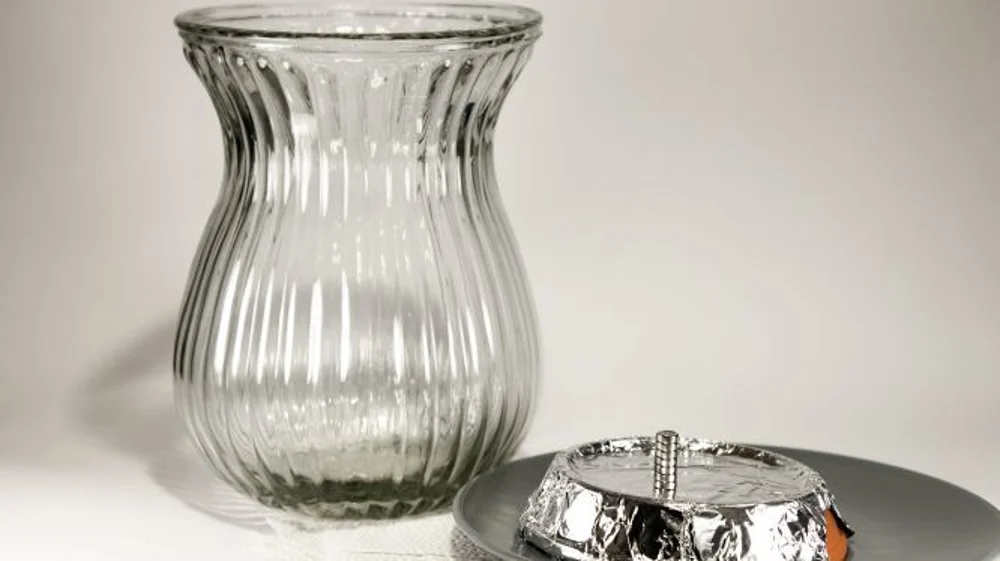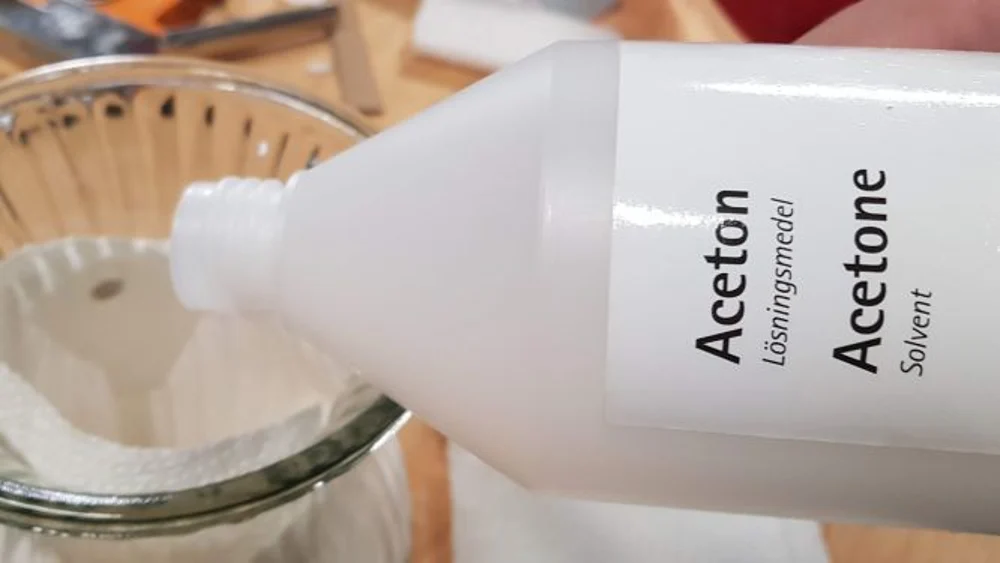Normally, FDM 3D prints show layer lines. Learn about acetone 3D print smoothing and create a totally smooth surface finish in just 6 easy steps.
What Is It?

One of the many things that fused deposition modeling (FDM) printers lack is the smooth finish you always get from injection-molded parts. Instead, you often get a matte, rough finish with visible layer lines. A popular way to get rid of these layer lines is to sand and fill until the surface is smooth. This method, however, takes ages to get anywhere close to smooth.
Another way that’s not only faster but also much better in preserving accuracy is acetone smoothing, which can be applied to any material that can be dissolved in acetone. The most popular filament to acetone smooth is ABS.
In this article, we’ll take a look at how you can acetone smooth your own prints. Follow along as we show you the process of smoothing the pictured BuddaYoda.
What You’ll Need

There are countless methods of acetone smoothing your 3D print, some more dangerous than others. We have therefore constructed a simple design with normal household items. Here’s what you’ll need:
- Towels
- One transparent glass vase (a glass jar also works fine)
- Magnets (at least six)
- A plate
- A small clay saucer (any structure that acts as a platform will do)
- Acetone
Optional:
- Aluminum foil
A Word of Caution

Acetone is a great tool for everything between cleaning your hot end to welding together two 3D printed parts. However, you need to know that acetone can also be very dangerous if used incorrectly.
Acetone is very flammable, so don’t use it near fire or something that can cause a spark. Also, be sure to work in a well-ventilated area since the vapor can cause headaches, dizziness, and a sore throat if breathed in too much.
Smoothing Steps

Now that you have prepared all of the materials, you can finally start acetone smoothing your prints.
- Fill the plate with water and place the clay saucer on it with the flat side facing up. We have added a layer of aluminum foil on top of it so that the model doesn’t stick and so that we keep that shiny surface from printing on a glass bed.
- Attach the tissues to the inside of your vase with the help of magnets. Then soak the tissues by pouring in small amounts of acetone and rolling the vase until everything is covered.
- Place your 3D printed model on the platform (clay saucer) and slowly lower the upside-down vase over it. It’s important that the water on the plate makes a seal so that the acetone won’t leak. In the beginning, you will see some bubbles coming out from the water, this is normal and nothing to be afraid of.
- Now you just have to wait until the layer lines have disappeared. It can take anywhere from half an hour to a couple of hours. (The Budda Yoda took just under two hours.) If you choose a transparent vase, it’s much easier to see the progress of your smoothing process (where there is no tissue) without guessing or having to remove it.
- When you feel happy with your print, you can carefully remove the vase and remove the print from the platform. Place it on something that doesn’t react to acetone. We recommend using a failed PLA print, preferably the ones that have stopped mid-print and left behind a flat surface with infill acting as an anti-sticking platform.
- The last step is to let your print dry from any acetone leftovers. Sometimes it just takes a day, but it can take many days for it to cure. When the part has been cured, you now have a 3D printed part that looks like it was injection molded!
Source: https://all3dp.com/2/abs-acetone-smoothing-3d-print-vapor-smoothing/